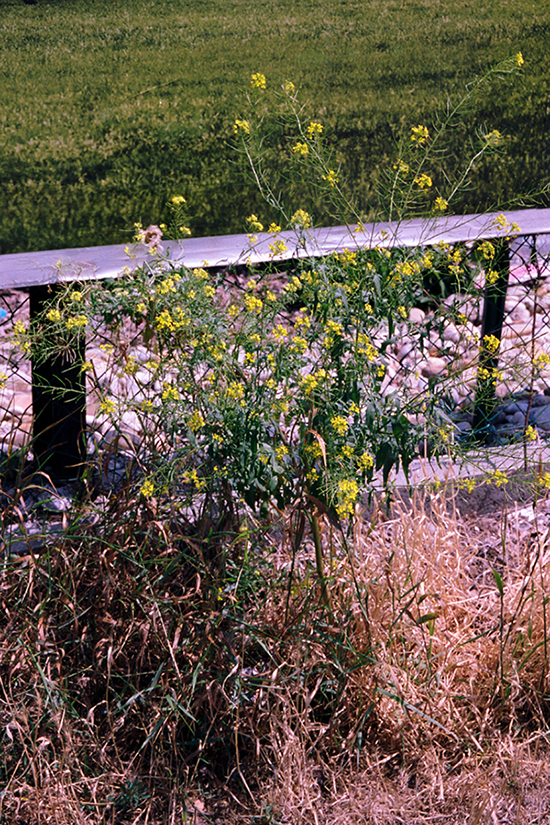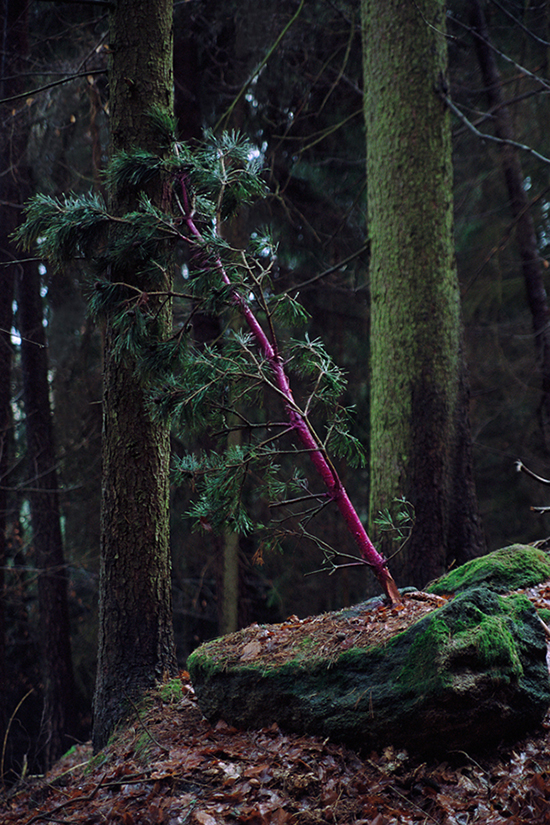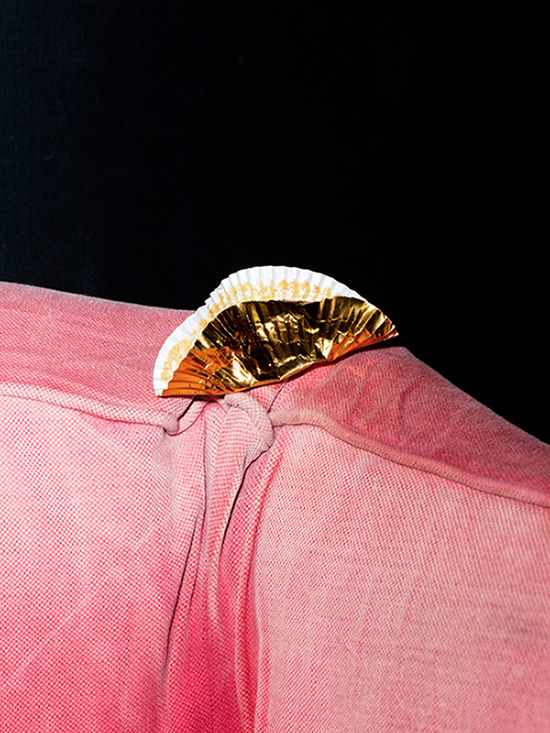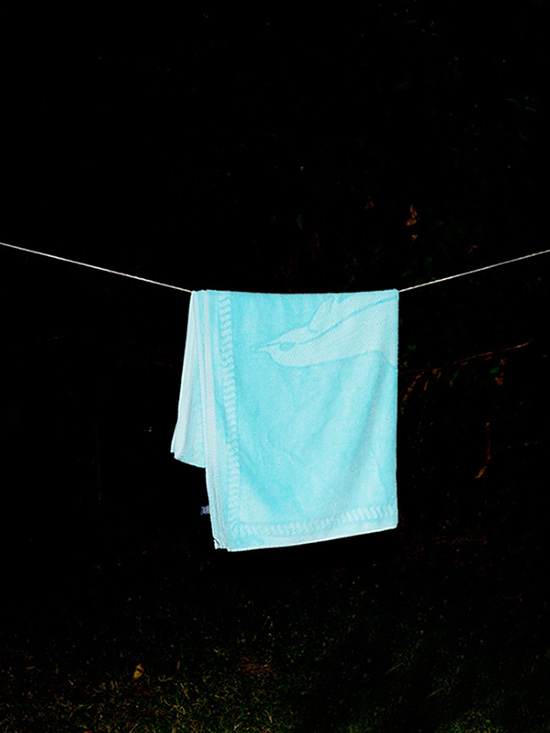Interview – In Conversation: Thomas Albdorf and Maurice van Es
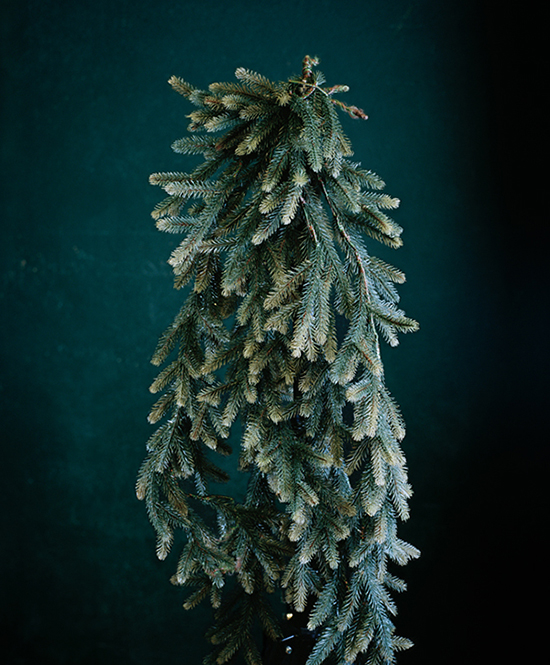

Thomas Albdorf: I met Maurice in July 2013 when I was visiting Amsterdam for a few days. It was the first occasion where I actually met face-to-face one of the artists that I followed keenly on the web; the first occasion in which the internet became real. It was intriguing to see that all the qualities and aspects I admired in his work were also there in his very persona.
We distributed an image that proved our meeting via Facebook, an image that probably led Patricia Karallis to invite us to do an artists’ talk for Paper Journal. The following took place across two Facebook chats that we started without a proper goal or aim and came down to two main topics: why we do what we do and distribute and perceive our work, and how we see the internet as a space for photography in general.
The Internet
Maurice van Es (MvE): Actually thinking of a big Facebook break, would be really great.
Thomas Albdorf (TA): You mean like abandoning Facebook for a certain time?
MvE: Yes, I’ve done it before, for six months. It was the greatest time. Costs so much time this whole Facebook thing.
TA: Agreed, but I consider it such an important communication tool for me, don’t think I could do that.
MvE: Don’t you feel bad about promoting yourself? For me it feels weird to do that. It helps too. But still …
TA: Hm, yes, a bit … but I still don’t have the feeling that I’m serving people something they don’t like, it still feels like sharing what I’m up to with the internet folk. It’s not like ‘Hey buy my prints’ or so, and you aren’t doing that either, so I don’t see the problem.
MvE: Yeah but it’s all about the approval thing. You prove you’re approved by a magazine, curator/whatever and then there’s the danger people like your work because others like your work. Really don’t like that. Judgement should be only about the work itself. Everything is in there already. The work itself doesn’t change because it has been in MoMA. I guess there aren’t many individual thinkers in the art world, a lot of people are looking at what others are doing.
I recently received an interview request ‘because I see your work everywhere’. Yeah, so what? I was recently thinking to erase the CV section on my website and change my news section with just the words I AM DOING FINE. But on the other hand you can always think: don’t take it too seriously, this is just the way it works. But I really don’t like this.
TA: Really loving the I AM DOING FINE … I’m struggling with the ‘Everything is in there already’, you know I’m more the ‘context is king / defines the work’-type. But I guess I can agree on the MoMA-quote. Of course we are doing what we do to be approved by others, but that doesn’t have to be a bad thing, it’s really about whom you’re longing for and how you do it. I am also not happy with this task of piling up exhibitions for your CV, it’s like trying to get the fanciest and most expensive clothes to get the recognition of other fashion victims … yeah, what?
But in the end, when I post something on the web and I do it with the intention to get recognition, in the long run it still gets me in touch with a) people who simply enjoy my work for what it is / can be b) people who engage in it and transform it further. Isn’t that a good thing? And hey, I am always looking at what others are doing, currently not so much due to time issues, but it doesn’t mean I’m stealing or copying. Without both our online activity we wouldn’t ‘talk’ now and we wouldn’t have met in Amsterdam.
Regarding individual thinking: I consider myself a part of a certain school, mainly driven by how we distribute and perceive images via the internet and construct them in our analog and digital devices; we talked about that in Amsterdam, remember? You, me, Krijno, Geeting etc. So I also accept that the things I do are heavily influenced by the work of others and that I, consciously or subconsciously, take and (hopefully) transform their achievements and try to push them further.
Nice story: I recently stumbled upon Everything is Anything Else by Jason Lukas, Zachary Norman and Aaron Hegert, and it simply took my breath away. I am currently working on something that is closely connected to the ideas discussed in this series. I was a bit frustrated that somebody else said or showed the things I am trying to formulate now already in such a great manner, but then again I was very happy about it. I flipped through their ‘notes’, a tumblr that lists and shows all their inspirations, and they wrote down my name alongside others in their first meeting that marked the starting point. Isn’t that beautiful? I might have triggered some thought in them, now same thing happens the other direction… longing for recognition here and I’m not ashamed.
MvE: I’m not thinking black and white about these kinda things because what you say is also true and there’s a lot of positive things around it. Agree on the context is king. But that’s for the people who were there and saw the exhibition. I was more talking about the people who only hear it: ‘Oh he has been exhibited in MoMA. He must be good.’ I don’t like that people don’t think for themselves. Or at least that’s something I feel (also, when I have ‘success’ with these kinda things, I can still feel the bullshit around it). And yes, there’s a lot of advantages with the internet. I actually found like a family on the internet who inspires me a lot.
At school I was bored by the photography department (have to say I really love my school) but on the internet I found people who I ‘feel’. Another thing is that it can be more democratic. On the internet it’s more about about the work itself, while here in Holland people think more in hierarchy: “Oh this person just graduated … “
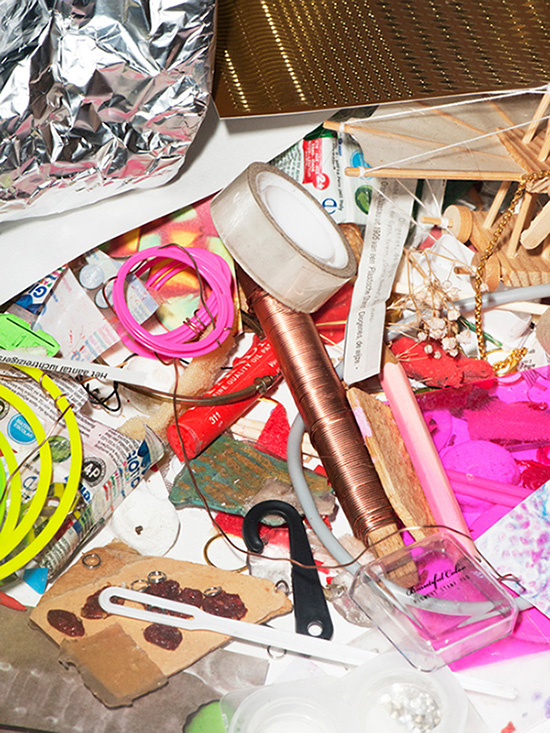
TA: Like in ‘He just graduated, he can’t make astonishing art yet?’ The internet democratises, but it also narrows down approaches, somehow. I don’t wanna hunt red hearts and blue thumbs on Tumblr and Facebook – at least not forever haha. Also, I just uploaded a photo set to Tumblr and then shared it on Facebook while waiting for your answer. I’m an internet bitch. Can you tell me something about that family? I’m confused …
MvE: It’s the same thing you talked about. Krijno, Geeting …
TA: Ahahaha I was thinking of a real family, like ‘Tanner America’
MvE: Hahaha, no, happy with mine. Here we have this term ‘artistic family’, so I call you family too.
TA: ‘I feel you bruv’
MvE: Also wanted to add that I hope I don’t sound bitter … because I type these things very relaxed and knowing it’s not the complete truth, but there’s aspects of ‘the art game’ I really don’t like. Yes it’s all about being happy for others also. Good point about Everything is anything else, even if they hadn’t named you.
TA: You doesn’t sound bitter. But I know you are a happy guy so my judgement is clouded.
MvE: Yes that’s the thing. There’s no timbre in my keyboard words. But it will be fine in the end.
TA: One last thing regarding the net: I somehow feel the pressure to constantly upload something to stay ‘in the game’, which can get really annoying when I am working on a new series that only slowly evolves. Sometimes I just wanna take my time off the net and focus on my work without distributing it immediately. Do you feel that too or is it just me?
MvE: Yes I kinda feel that pressure too. But I’m also working on a project now which I want to be shown ten years later after it’s complete. But there I come again with my FB break… or even Tumblr break.. I’m very curious about what it would do to me. Seeing no other work, not showing anything and then after six months be back with something new.
TA: So, to conclude things: we love the net, we hate the net and every shade of grey in between.
MvE: Haha yes, agree. But for both I guess there’s more love right? Yes, far more love for it. The negative things around it I don’t feel them all the time. After talking about it, as a sign of not ignoring this nonsense … it already feels better.
TA: A therapeutic talk, that’s good. I’ll always be there if you need to talk Maurice, sitting here in the Facebook bar.
MvE: BTW, Do you find it scary to post something? I still meet people who say: ‘I would not dare post my work on Facebook.’
TA: Hm, no … only if I have the feeling that I try something very separated from my ‘usual’ work I might be scared that people who’s opinion I care about ‘deny’ it. But although I cherish the web’s importance regarding my practice, I still don’t take a post too serious.
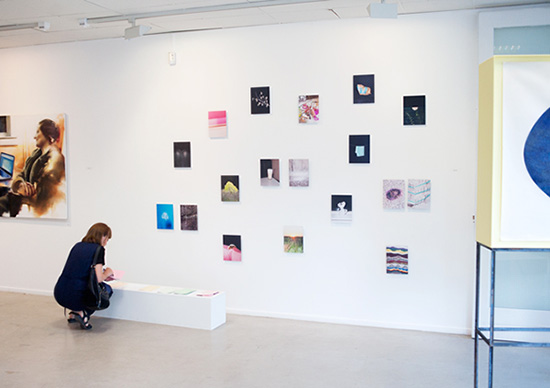
Intent
MvE: I was thinking while cycling: What is your intention with your work? Do you think it’s important that the viewer knows about your intention, assuming you have an intention with your work? Is it good to talk about intentions? Is it ok that talking about work influences the way it can be seen?
TA: I’d like the viewer to know about my intentions, but I’m completely aware that I simply can’t influence people’s perception, especially not when work of mine gets reblogged and appears in varying contexts on the web. Talking about my intentions, I have to clarify that I don’t work like ‘I’m gonna visualise that thought’, I simply work with photography and of course the things and ideas that I am engaged in determine what I am working with. In general, I am interested in staging scenarios and objects that are mostly considered banal or worthless to create an image that changes their perception and raises questions about the conditions of image production; it’s basically all about looking long and thoughtfully at simple things.
This is a similarity in our work, do you agree on that? Although I’d say your approach is more thoughtful, even silent somehow … when looking at your various series, I am always overwhelmed by the sensitivity and respect that I could see in the images. Nothing seems pushed, it’s rather like a very elaborate, happy and charming conversation with the things and scenarios surrounding you.
Last time we met, we briefly talked about politics in our work and whereas, if I remember correctly, you were not considering your work as political so much, for me this respect and thoughtfulness that you apply to such simple scenarios is definitely political. It’s about being happy with simple situations, trying to give space for a thoughtful perception to slight gestures … do you agree?
MvE: I guess intention can’t be seen very clear in the single image, but more in the whole attempt (oeuvre/series) of an artist. Tumblr is always about the visual qualities of an image. Mostly judged on aesthetics/coolness/rare things/wow factor. But it’s soo nice to imagine every image you see is taken by a person. Nowadays it’s hard to imagine this because we see a lot of images. So it has to be a quality of the work to refer to the thoughts and actions of the maker behind the camera. That’s what I like about your work, I see you walking through the woods… and then the work is also about the performance of what you actually do there, it becomes part of the way you live. So then it has to mean something right? Thinking about that is what I really like. The space around the picture.
That’s the same with Geeting and Krijno. Those guys have fun and are wondered by their surroundings. You see that through their work, I really love that.
TA: I sometimes think of my work as a picture that reenacts a rather banal image, for example let’s say a photo of flowers, which contains slight contextual shifts. The viewer sees an image he is used to, then understands that it’s ‘not real’ and questions the intention behind it. That would be my perfect perception haha. So I think I’m into the idea that the viewer doesn’t think about the probable image creator, then perceives some disturbing facets and questions the states of production for the image. But yeah, the wow factor online … tricky.
Also the series aspect. Remember you posting something about people complaining via Tumblr about you not posting single images, because it’s so hard to reblog. It was in the hilariously good Daniel Everett post about losing followers on Tumblr, gotta find that again… I like to see posts as places *dreamyfaceexpression*
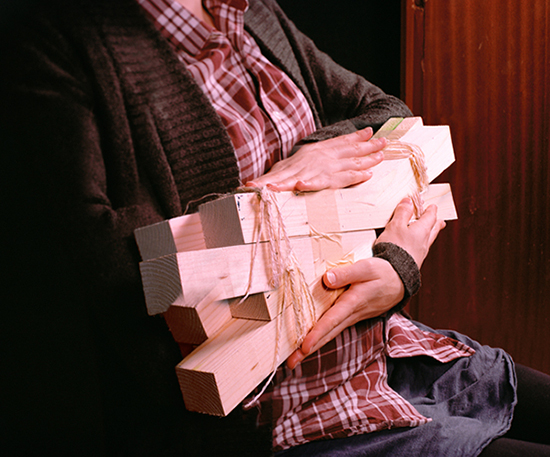
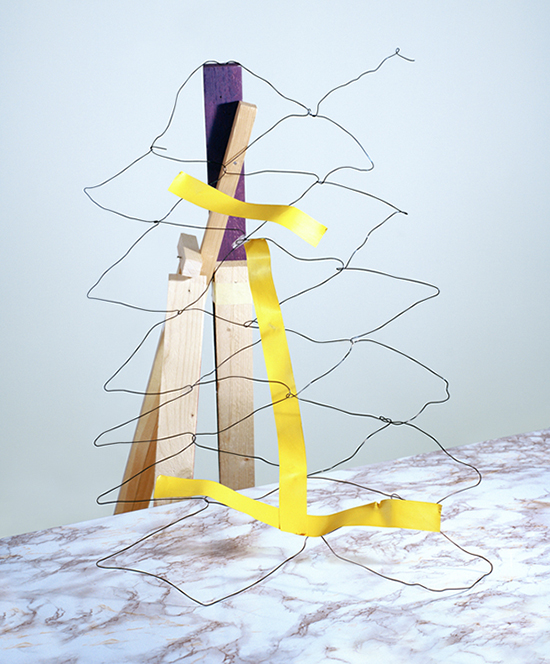
MvE: Addicted to fast image consumption, haha I see really strange things there… Sometimes when just reblogged I found my photo back at page 12. Unbelievable. In less than a minute. Still love Tumblr a lot. Also because of this, it stands for the human in general, wanting so much in little time. But wait … Let me get back at what you said about your own work …
TA: People define themselves via reblogging, and some people may have the urgent need to define themselves via a huge mass of cool things – and van Es posts are just cool. I mean, for me they are more than that, don’t get me wrong.
MvE: I can follow you. Also with your latest Photoshop photos that happens too. What I really love about your work are the not -wow- photos. I see them more as research and result of you just strolling around. Combined with the more wowed ones it’s very nice. I guess those pictures could be best described as just ‘registration’ pictures. You know what I mean?
TA: Hm … I like to think of all the pictures I publish or use for a series as equally important. The less-wow-images are not worth less. That’s one important aspect to me. But it can be a trap, I still have to figure out how to contextualise the let’s say simpler images. It’s not about finding the Photoshop treatment.
MvE: Yes I saw that, really like that. In my own work I always try to describe my relationship towards my subject, which is always personal. I’m not that much of a photo designer. Yes I design the objects I find but they always came to me by accident, just from living my life. I would never buy objects in a store to photograph them. That just doesn’t feel right and a bit forced. For me it’s really important that there’s still an attachment to life itself.
TA: I can feel this connection in your work, that’s what I meant with the sensitivity and the respect you apply to your act of communication with these objects. I have to admit I sometimes buy things to photograph them. I am interested in how these props differ from things I have a personal relationship to when photographed. Real things vs. fake things. But I can totally see the necessity of the personal relationship in your work.
MvE: Yes a combination can be nice. You see that in Geeting’s work too. BTW, we should add some others too in ‘our’ discipline, now that Geeting’s work comes up in conversation all the time. I also try to play with this relationship value by making things very abstract sometimes.
TA: Like in the Textures of Childhood? Although you are displaying highly personal information, you do that in a very abstract way. The same with New Life…
MvE: I guess Textures of Childhood could be still very recognisable to viewers. I find more value in the textures of my youth than the smiling faces that I don’t recognise myself in anymore. In New Life I tried to get access to my sixteen year old brother, who was in the middle of puberty and would not tell me/ us anything about what he was doing.
This series ended up with me taking a photograph of him every time he left the house. For me New Life is also about dealing with the ultimate reportage photography cliche that when you go hang around with somebody you can tell something about this person. For me it’s really nice to show this impossibility of not reaching a person. And also if I could go hang out with him in his new environment, I still couldn’t tell anything about him with photography. Also, because you see the weather changing and see a lot of different attempts, you also see my curiosity towards my brother visualised. Only that is enough for a story.
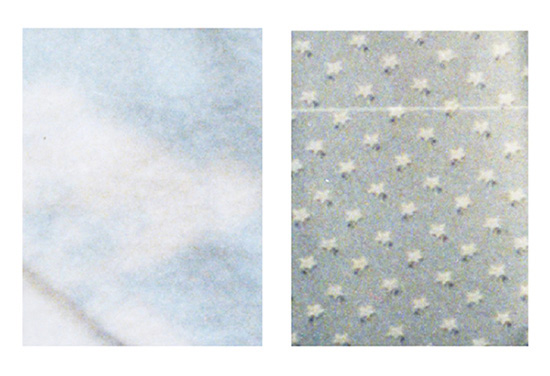
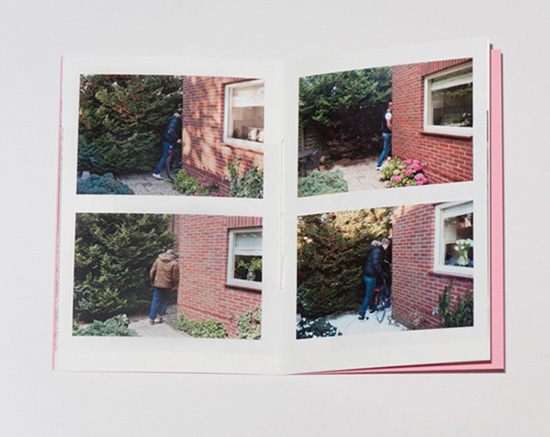
TA: Somebody, you, cares about your brother, although we are not able to get information about him via that series. The series tells us about you wondering what your brother does. But what do you then mean by abstract? Are the objects in your series YES personal? Here the connection would be hidden from the viewer, I suppose.
MvE: Yes, that’s what I mean. But they still are … they all refer to me as a person being involved with my surroundings at that time. But the abstract -wow factor / coolness- of it can stand away from the ‘message’… It’s also just about having fun and maybe coming up with a ‘message’ afterwards. If photography can do that, it already did a lot. I really don’t like persons who have the biggest stories about their work, talking mega serious about their work. Oh they make me laugh. You can’t do much with photography actually …
TA: I disagree, but I might have a different perception of what is considered much regarding achievement, it’s the same with us seeing our work as political or not political. I think you do a lot with your photography, just saying.
MvE: Yes but I guess because I embrace the impossibility of it.
TA: And I embrace small achievements as great victories. And you’re a winner, Maurice!
MvE: But here’s a big difference between us right? I see my work positioned with how normal people deal with photography. What I mean about achievement, is that I don’t believe much in telling big stories with photography. During my graduation show, I did notice you can achieve a lot with photography and especially photo books, which helps to reach people with your vision/stories/motivation etc. What I like about the book is that it’s a 24/7 exhibition that can be seen everywhere. I also think my work works way better at night. So the book gives the opportunity to see it where you want and what time, it’s all up to the viewer.
TA: The book is a more intimate approach to show ones work, definitely, you don’t have to expose yourself as much as during an opening. I also consider it more democratic, given the accessibility and availability. But what do you mean by your work functioning better at night?
Regarding what one can tell with photography … there are certain limitations that appear when we reach a certain level of complexity in our discussion, which in our case would be photography. It’s like that in all disciplines, not only art. So we automatically and unintentionally exclude many people from our conversation … is that what you meant with the limitations of telling something via photographs or images?
MvE: Yes or people who are not aware of how poor the medium of photography is and then have the biggest stories about their images. What do you think you can do with photography? Night is more calm. Fits my work better I guess. You mean like there’s a lot of work just made for the art world itself? Haha yeah sometimes it makes me laugh, those trends inside this small world. I recently read an article about this.
TA: Ha I also read that! Jessica Eaton posted it, I think. Although I am very much into art discussing its own productional circumstances, if these discussions and deconstructions are becoming the only content, we quickly face a Clement-Greenberg-like dead end again. I don’t want to be occupied with art that solely talks about art, I’m also into football, 80’s action movies and cats, and for me personally those topics are simply more relevant than the same institutional critique over and over again, because most institutions are very very far away from the things that fuel my practice and that I like to talk about.
But as mentioned above, if you constantly occupy yourself with something, your thoughts become more complex, you develop a deeper understanding … and thereby you often exclude others that don’t have that insight. It’s quite easy to forget that when you’re looking at images mainly on the web scrolling through your dashboard and your Facebook. I don’t know what I can do with photography, but I try to catch people that are less involved with contemporary image production via slight jokes and shifts to then lead them to the layers beyond in my images. And for the people involved, well everything’s quite there.
MvE: Oh I read it just a couple of days ago. On the other hand it means something this being a trend. I really wonder how we see this period in 40/50 years. What would be written about it then? You called my work political right? Can you explain why? Because I see my work more as something reacting against the importance of ‘news’ that appears in the media, where politics are a part of. I guess this is part of the big trend, a lot of people now are dealing with the everyday mundane subjects around us (your work too, that’s why I would never call your work political).
Yeah I recently met a curator and he was so tired of how artists talk about themselves. Haha when he asked: How are you doing? Artists were always talking about their work and upcoming exhibitions/etc, while he would rather be more interested in their life, random stuff like watching a football match.
Yes and there my mother comes in. I love and hate it about what she thinks I’m doing. She has no clue and is very supportive because I am her child.. but haha, no, not a single clue. It also fills me with joy and helps me to relativise, helping not to take yourself too serious. It’s just for a very very small group. (and mostly for myself)
TA: Maybe political is the wrong word, but since I don’t have a better one … it has to do with the mundane, but also with accompanying aspects of what we use for our art. I always have to think of Andreas Gursky: a stunning motive (okay, you can always discuss what is stunning), printed and mounted in huge dimensions, extremely expensive small editions. Whereas I really like certain aspects about his work, it also seems to be produced for museums, for wealthy collectors, for an audience that wants to distinguish itself from others, let’s polemically say poor people.
You on the other hand, are documenting detailed aspects of everyday life, things that people can easily relate to. I don’t feel diminished when I see your work, I am aroused in a charming way. And whereas the rich people’s large images hardly work when printed in books, your work, as you stated above, functions best in your publications. It’s just accessible. That’s what I consider political about it; it’s accessibility, it’s charm, it’s roots in the mundane and often overlooked subjects. But again, maybe politically is the wrong word.
My dad can relate to what I’m doing, definitely on a different level than most people, but he gets a clue when we are hiking through the woods or when I’m stacking things that I find in my parent’s basement. It’s like ‘Look dad I stacked things!’ and then we both laugh. This level is very important to me, somehow.
